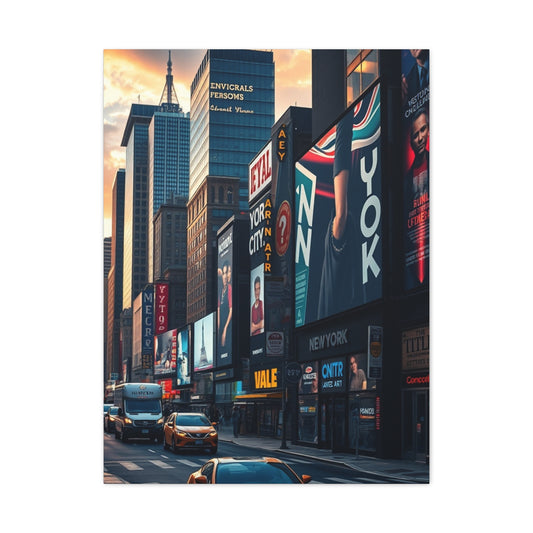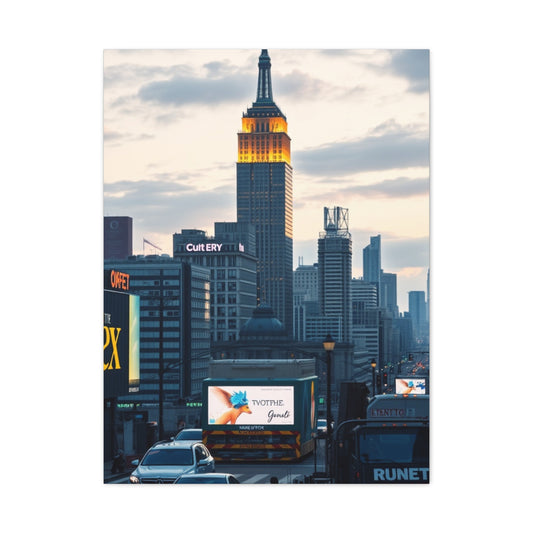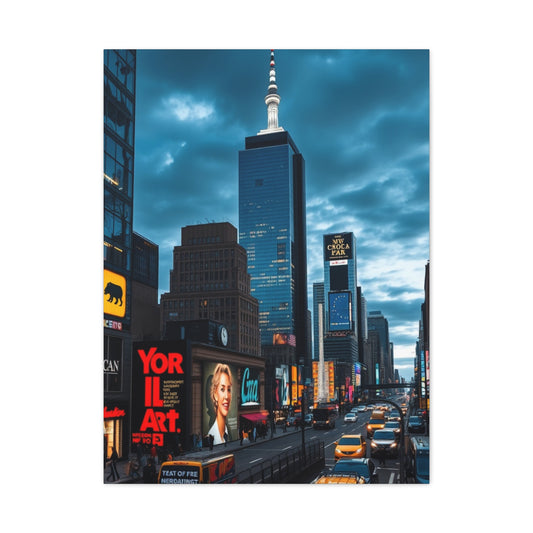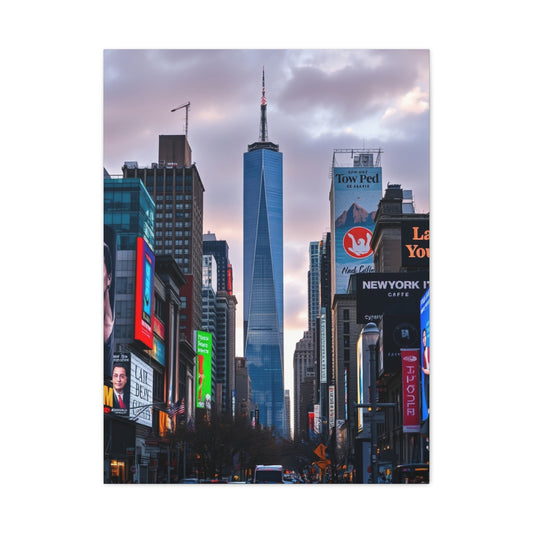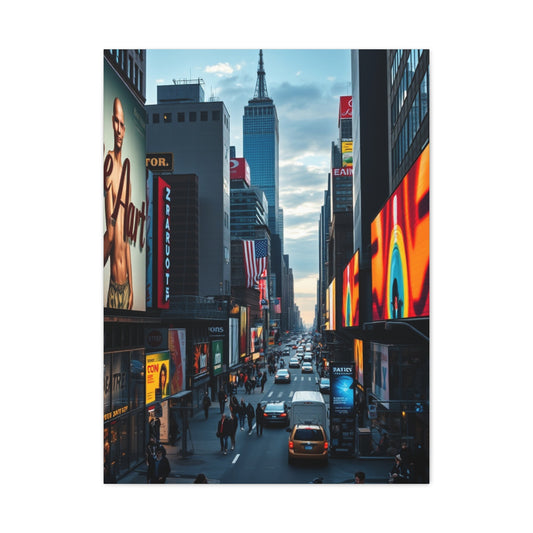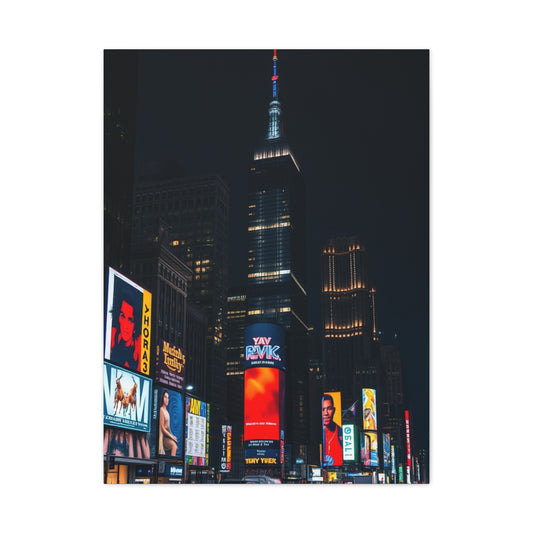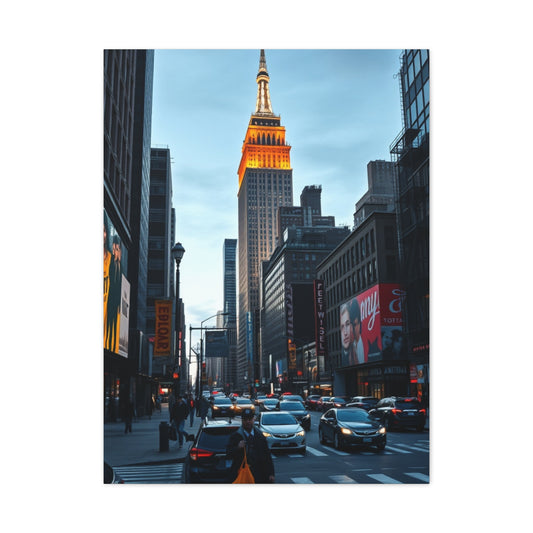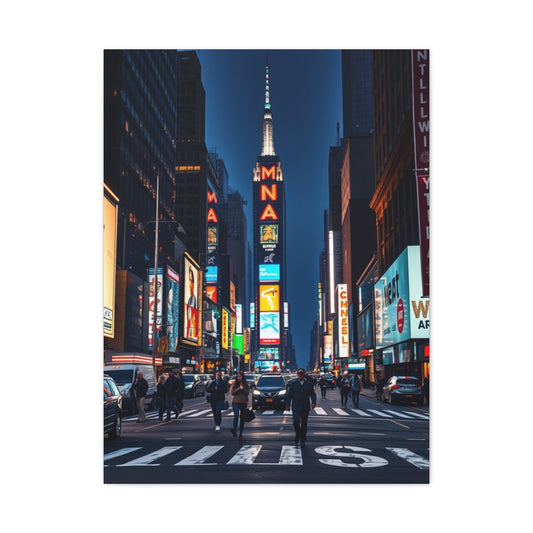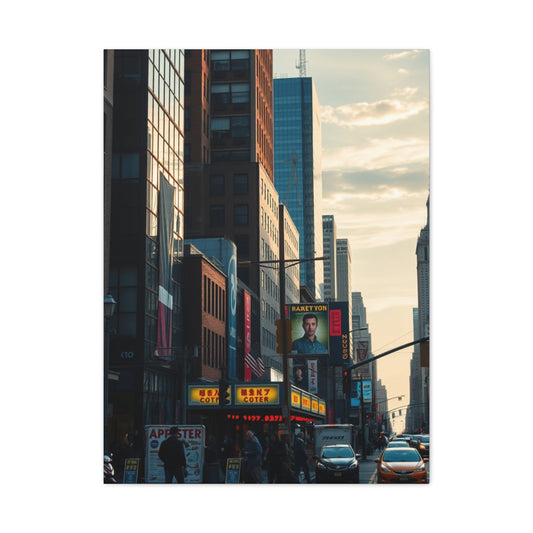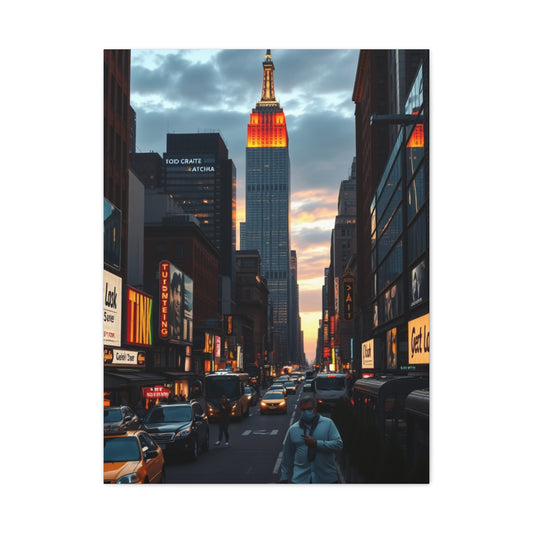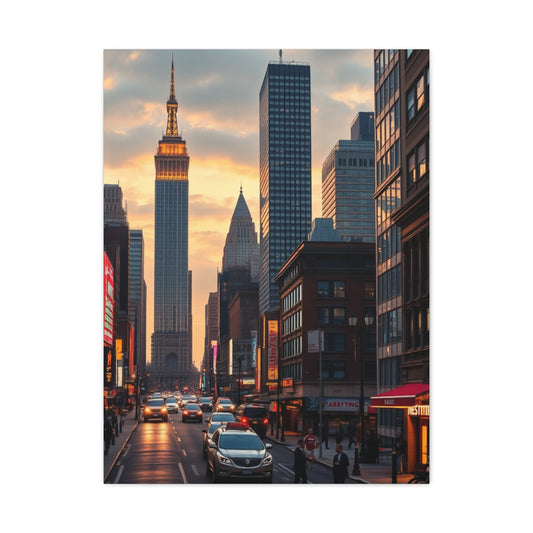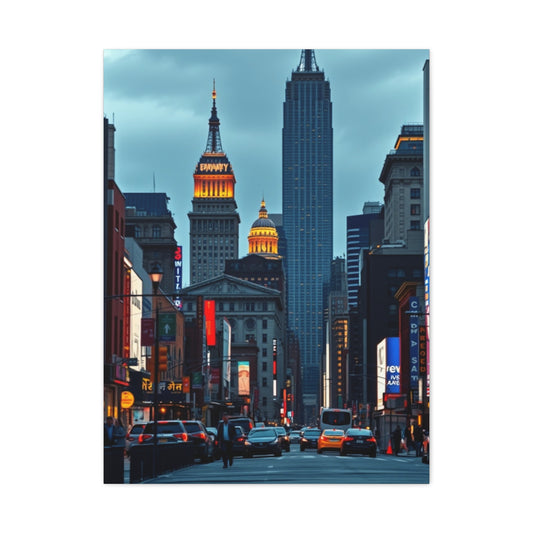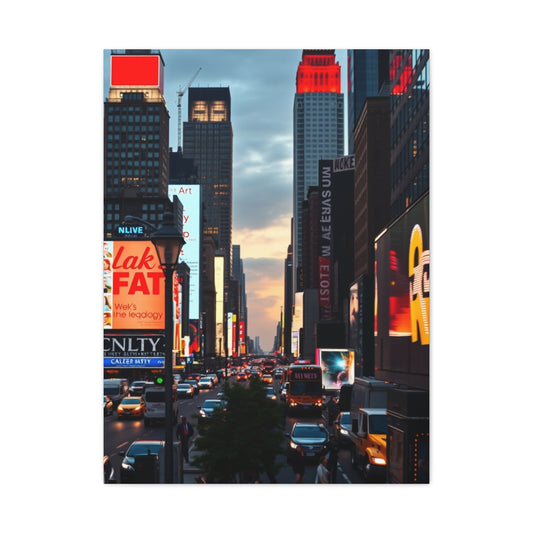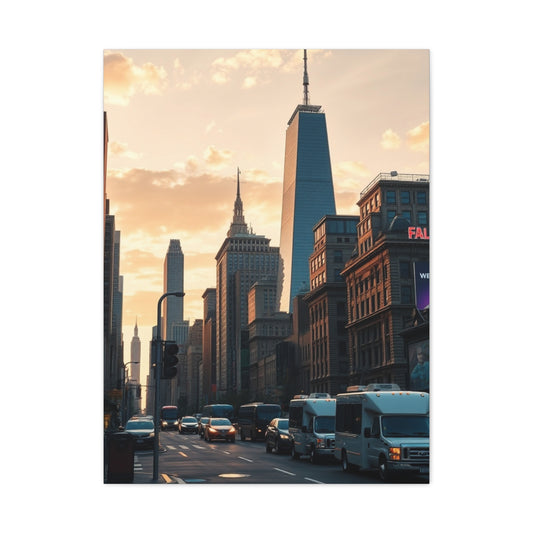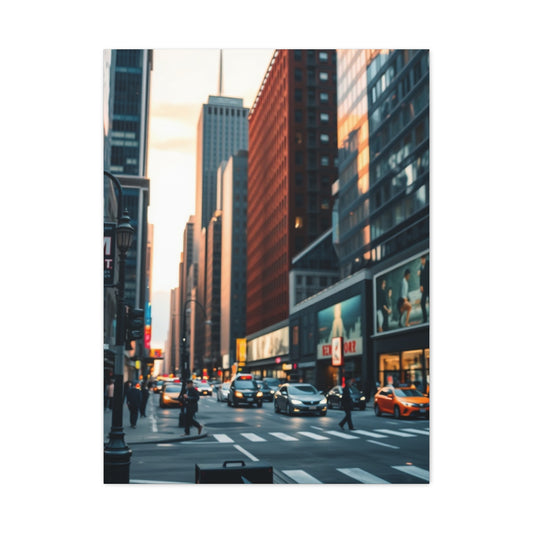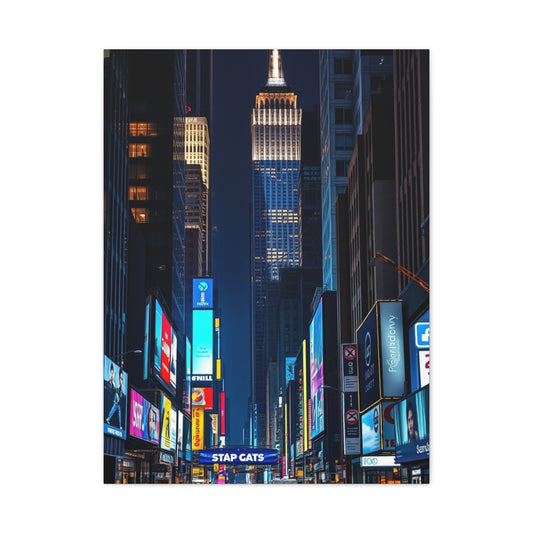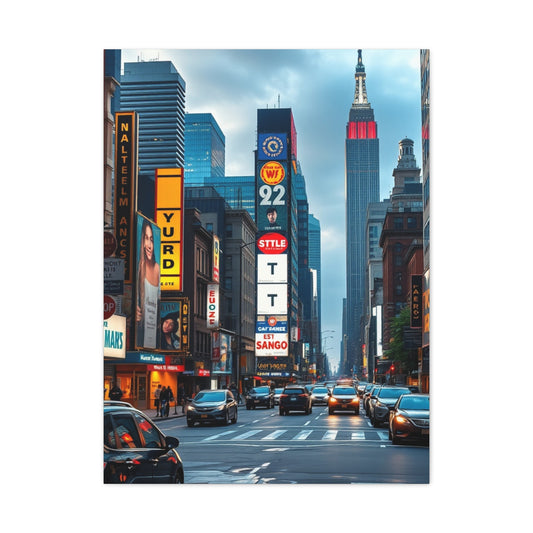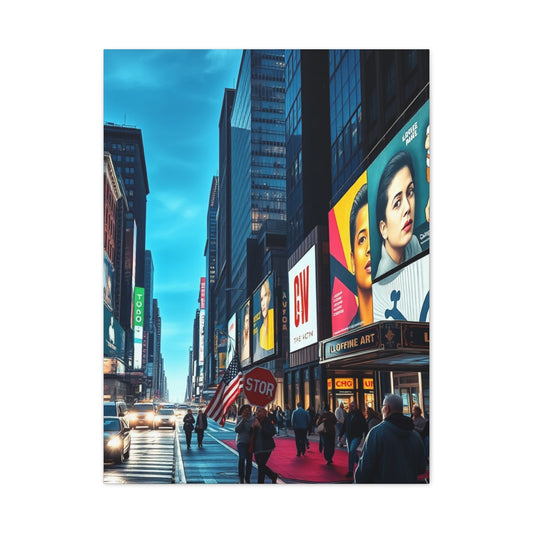The Role of Wall Art and Murals in Urban Regeneration Across Cities
The vibrant tapestry of urban street murals serves as the cultural heartbeat of metropolitan areas worldwide, functioning as silent chroniclers of societal narratives that traditional media often overlooks. These magnificent displays of artistic expression emerge from the creative souls who transform ordinary concrete surfaces into extraordinary canvases, wielding spray cans and brushes as instruments of storytelling. Each stroke captures the essence of community experiences, political movements, social commentary, and cultural evolution that defines the character of modern cities.
Street murals represent far more than mere decorative elements adorning building facades. They constitute a democratic form of artistic communication that transcends linguistic barriers, socioeconomic divisions, and cultural boundaries. These visual narratives speak directly to passersby, offering glimpses into the collective consciousness of neighborhoods while simultaneously challenging conventional perspectives on art, ownership, and public space utilization. In doing so, murals foster dialogue among residents, inviting reflection on shared histories, current struggles, and aspirations for the future.
The transformation of urban environments through street art has evolved from underground rebellion to mainstream cultural phenomenon, with municipal governments increasingly recognizing the value these artistic expressions bring to tourism, community pride, and urban revitalization efforts. Cities worldwide now compete to attract renowned mural artists, hosting festivals and commissioning large-scale works that draw millions of visitors annually. Public art initiatives have also become tools for social engagement, allowing local communities to collaborate with artists, creating works that reflect the unique stories and identities of their neighborhoods.
Moreover, murals often function as visual landmarks, guiding both residents and tourists through complex urban landscapes while fostering a sense of place and belonging. In addition to their aesthetic appeal, these works frequently address pressing social issues, from climate change and racial equality to immigration and mental health, transforming city streets into forums for awareness and advocacy. By bridging the gap between art and everyday life, murals enrich urban experiences, inspiring creativity, empathy, and cultural appreciation among all who encounter them.
This comprehensive exploration examines eight remarkable cities that have embraced street art as integral components of their cultural identity, showcasing how these urban centers have become living galleries where creativity flourishes on every corner. From historic districts to industrial zones, these murals serve as testaments to human imagination, resilience, and the enduring power of visual storytelling in shaping the soul of a city.
The Comic Strip Capital Where Fantasy Meets Reality
Nestled in the heart of southwestern France, Angouleme stands as an unparalleled destination for enthusiasts of visual storytelling and comic artistry. This picturesque city has earned international recognition as the undisputed headquarters of European comic culture, hosting the prestigious International Comics Festival that annually transforms the entire municipality into a celebration of sequential art and graphic narrative.
The urban landscape of Angouleme presents visitors with an extraordinary collection of trompe-l'oeil murals that blur the boundaries between reality and imagination. These masterfully crafted illusions demonstrate such remarkable attention to detail and perspective that observers frequently find themselves pausing to verify whether architectural elements are genuine or artistically rendered. The city's commitment to preserving and expanding its mural collection has resulted in over thirty permanent installations that collectively tell the story of comic art's evolution.
The European School of Visual Arts has established Angouleme as a premier destination for aspiring comic artists and illustrators from across the globe. Students and professionals alike contribute to the city's ever-growing collection of street art, participating in workshops, collaborative projects, and competitive exhibitions that continuously refresh the visual landscape. The school's influence extends beyond formal instruction, fostering a community of creative individuals who view the entire city as their collaborative workspace.
Among the most celebrated works adorning Angouleme's walls are tributes to legendary comic creators whose contributions have shaped the medium's development. Detailed murals depicting scenes from beloved comic series invite viewers into fantastical worlds while simultaneously honoring the artistic traditions that continue to inspire new generations of storytellers. The city's dedication to maintaining these artworks ensures their longevity, with regular restoration efforts preserving their vibrancy and clarity.
The annual Comics Festival transforms Angouleme into a temporary metropolis of artistic expression, with temporary installations complementing permanent fixtures throughout the city center. Publishers, artists, collectors, and fans converge on the city's streets, creating an atmosphere of creative energy that reinforces Angouleme's position as the epicenter of European comic culture. This celebration extends beyond traditional comic mediums, incorporating digital art, animation, and interactive installations that reflect the evolving nature of visual storytelling.
Local businesses have embraced the city's artistic identity, with cafes, bookstores, and galleries incorporating comic-themed elements into their establishments. This symbiotic relationship between commerce and creativity has generated a unique urban ecosystem where art and daily life intersect seamlessly, creating opportunities for spontaneous cultural exchanges between residents and visitors.
The architectural integration of street art in Angouleme demonstrates sophisticated urban planning that considers both aesthetic appeal and practical functionality. Murals are strategically positioned to enhance natural lighting, complement existing structures, and create focal points that guide pedestrian traffic through the city's historic districts. This thoughtful approach has resulted in a harmonious blend of contemporary artistic expression and traditional French architecture.
Montreal: Where Multicultural Creativity Flourishes on Every Surface
Montreal's dynamic street art scene reflects the city's multicultural character and bilingual heritage, creating a unique artistic landscape that celebrates diversity while fostering cross-cultural dialogue through visual expression. The metropolis has emerged as North America's premier destination for large-scale mural projects, attracting internationally renowned artists who contribute to an ever-expanding collection of public artworks that transform neighborhoods and inspire community pride.
The renowned MURAL Festival has positioned Montreal as a global hub for street art creation, annually inviting dozens of artists from around the world to create monumental works throughout the city's various districts. This celebration of urban creativity extends far beyond the festival period, with year-round programming that includes artist residencies, community workshops, and collaborative projects that engage residents in the creative process. The festival's impact extends throughout the metropolitan area, with satellite projects creating artistic connections between diverse neighborhoods.
Montreal's approach to street art regulation demonstrates progressive municipal governance that balances artistic freedom with community concerns. Designated zones throughout the city provide legal spaces for artistic expression while protecting private property and maintaining neighborhood character. This balanced approach has reduced conflict between artists and authorities while encouraging responsible creativity that enhances rather than detracts from urban environments.
The city's street art encompasses an impressive range of styles, techniques, and subject matter that reflects its diverse population and rich cultural heritage. Murals celebrating Indigenous traditions appear alongside works exploring contemporary social issues, creating a visual dialogue that spans centuries of cultural evolution. French and English linguistic elements frequently appear within artworks, reflecting Montreal's bilingual identity while making artistic statements accessible to broader audiences.
Underground passages and metro stations throughout Montreal feature extensive collections of commissioned and organic street art that transform utilitarian spaces into unexpected galleries. These subterranean artworks provide year-round accessibility despite harsh winter conditions, ensuring that artistic engagement continues regardless of seasonal limitations. The integration of art into public transportation infrastructure demonstrates Montreal's commitment to making cultural experiences accessible to all residents and visitors.
Neighborhood-specific artistic themes have emerged throughout Montreal, with different districts developing distinct visual identities that reflect local demographics, historical significance, and community priorities. The Plateau Mont-Royal showcases bohemian creativity and counterculture messaging, while downtown commercial districts feature more polished, tourism-oriented installations. This geographic diversity creates opportunities for art tourism that extends throughout the metropolitan area.
Montreal's street art community has developed sophisticated networks for sharing resources, coordinating projects, and mentoring emerging artists. These grassroots organizations provide crucial support for maintaining artistic quality while fostering innovation and experimentation. Regular community meetings, skill-sharing workshops, and collaborative projects strengthen relationships between artists and residents, creating sustainable foundations for continued artistic growth.
The city's harsh winter climate has inspired unique approaches to street art preservation and seasonal adaptation. Artists have developed specialized techniques for cold-weather application and protective treatments that extend artwork longevity despite extreme temperature fluctuations. Some installations incorporate seasonal elements that change appearance throughout the year, creating dynamic artworks that evolve with Montreal's dramatic seasonal transitions.
Reykjavik: Nordic Minimalism Meets Bold Artistic Expression
Iceland's capital city presents a fascinating contradiction between its stark natural environment and vibrant urban art scene, creating a unique aesthetic that combines Nordic minimalism with bold, internationally influenced street art. Reykjavik's compact size and progressive cultural policies have transformed the entire city center into an accessible outdoor gallery where residents and visitors encounter artistic surprises around every corner.
The temporary nature of much of Reykjavik's street art reflects the city's embrace of artistic evolution and seasonal renewal. Many installations are designed with intentional impermanence, allowing walls to serve as rotating canvases that showcase different artists throughout the year. This approach prevents artistic stagnation while ensuring that the city's visual landscape remains fresh and engaging for repeat visitors and long-term residents.
Guido Van Helten's monumental photorealistic portraits have become iconic symbols of Reykjavik's artistic identity, transforming anonymous building facades into powerful statements about human dignity and community connection. These massive installations demonstrate technical mastery while celebrating ordinary citizens as worthy subjects for monumental artistic treatment. The artist's focus on local residents creates profound emotional connections between viewers and artworks, fostering community pride and artistic appreciation.
The Wall Poetry initiative represents innovative collaboration between corporate sponsorship and artistic expression, demonstrating how commercial partnerships can support cultural programming without compromising artistic integrity. This program has commissioned works from internationally recognized artists while providing platforms for local talent to gain exposure and develop professional skills. The resulting installations celebrate both musical and visual artistry, creating multi-sensory experiences that engage diverse audience segments.
Reykjavik's extreme seasonal variations create unique challenges and opportunities for street artists working in sub-Arctic conditions. Summer's extended daylight hours provide exceptional natural lighting that enhances color saturation and visual impact, while winter's limited sunlight creates intimate viewing experiences that encourage close examination of artistic details. Artists have adapted techniques and materials to withstand harsh weather conditions while maintaining aesthetic quality throughout the year.
The city's small size fosters intimate relationships between artists and community members, creating opportunities for dialogue and collaboration that might prove impossible in larger metropolitan areas. Public art projects frequently involve community input and participation, resulting in installations that reflect local concerns, cultural values, and collective aspirations. This collaborative approach has strengthened social cohesion while elevating artistic standards through shared accountability.
Reykjavik's street art scene benefits from Iceland's strong literary tradition and cultural appreciation for storytelling. Many installations incorporate textual elements, wordplay, and narrative structures that complement visual components, creating layered artworks that reward careful examination and interpretation. This integration of literary and visual elements reflects broader Icelandic cultural values while appealing to international audiences seeking intellectually engaging artistic experiences.
The city's commitment to gender equality is reflected in its street art programming, with deliberate efforts to showcase female artists and address gender-related themes through public installations. This progressive approach has attracted international attention while inspiring other cities to examine their own practices regarding artistic representation and inclusion.
Los Angeles: Where Hollywood Dreams Meet Urban Reality
Los Angeles represents the epicenter of American street art culture, where the confluence of entertainment industry influence, immigrant communities, and social activism has created an unparalleled landscape of artistic expression that spans from subtle political commentary to massive commercial installations. The city's sprawling geography and diverse neighborhoods have fostered distinct artistic communities that contribute to a rich tapestry of visual storytelling.
The Hollywood entertainment industry's presence has profoundly influenced Los Angeles street art, with many installations celebrating cinematic history, television culture, and musical achievements. Murals depicting legendary entertainers appear throughout the city, creating informal shrines that celebrate cultural contributions while attracting tourism to otherwise overlooked neighborhoods. These celebrity-focused artworks demonstrate the intersection between popular culture and community identity in contemporary American urban environments.
Social justice themes permeate much of Los Angeles street art, reflecting the city's history of civil rights activism and ongoing struggles with inequality, gentrification, and immigration policy. Artists use public walls as platforms for political discourse, creating powerful visual statements that challenge viewers to confront uncomfortable truths about social conditions. These politically engaged artworks contribute to broader community conversations while preserving historical memories of struggle and resistance.
The city's extensive freeway system has created unique canvases for large-scale artistic projects that reach thousands of daily commuters. These highway-adjacent installations must compete for attention in environments filled with commercial signage and vehicular traffic, resulting in bold, high-contrast designs that maximize visual impact within brief viewing windows. The scale and visibility of freeway art have elevated street art's profile within mainstream cultural discourse.
Los Angeles gangs have historically used graffiti for territorial marking and communication, creating complex relationships between illegal tagging and legitimate artistic expression. Contemporary street art scenes must navigate these historical associations while reclaiming public spaces for positive community purposes. Many successful interventions have transformed gang-affiliated areas into celebrated artistic destinations, demonstrating art's power to reshape neighborhood identities.
The city's climate provides ideal conditions for outdoor art preservation, allowing installations to maintain vibrancy and clarity for extended periods without weather-related deterioration. This environmental advantage has attracted artists from regions with harsher climates who appreciate opportunities to create works that will remain visible and impactful for years rather than months.
Chicano art traditions have profoundly influenced Los Angeles street art aesthetics, contributing distinctive visual elements, cultural themes, and artistic techniques that distinguish the city's work from other metropolitan areas. These cultural contributions reflect the significant Latino population while celebrating heritage, identity, and community solidarity through public artistic expression.
The city's vast geographic spread has enabled the development of neighborhood-specific artistic identities that reflect local demographics, economic conditions, and cultural priorities. Venice Beach showcases bohemian creativity and tourist-oriented installations, while East Los Angeles features politically engaged works addressing immigration and social justice. This geographic diversity creates opportunities for art tourism that spans the entire metropolitan area.
Paris: Where Revolutionary Spirit Meets Artistic Innovation
The French capital's complex relationship with street art reflects broader tensions between traditional cultural institutions and contemporary artistic expressions, creating a dynamic environment where illegal graffiti coexists with commissioned public artworks in an ongoing negotiation over who controls urban visual landscapes. Paris has emerged as a crucial testing ground for evolving attitudes toward public art, artistic freedom, and cultural democratization.
The rapid appearance and disappearance of Parisian street art creates an atmosphere of urgency and impermanence that reflects the city's strict enforcement policies and artists' need for stealth and speed. This cat-and-mouse dynamic between creators and authorities has fostered innovative techniques for rapid installation while encouraging artistic styles that maximize visual impact within minimal time frames. The resulting aesthetic emphasizes bold graphics, clear messaging, and memorable imagery.
Hip-hop culture's influence on Parisian street art demonstrates the global circulation of artistic movements and their local adaptation within specific cultural contexts. French artists have incorporated American hip-hop aesthetics while addressing distinctly European social issues, creating hybrid artistic expressions that speak to both local and international audiences. This cultural fusion reflects Paris's position as a cosmopolitan center where global influences merge with local traditions.
Political messaging features prominently in Parisian street art, with artists using public walls to comment on government policies, social inequalities, and cultural controversies. These politically engaged works contribute to broader public discourse while providing alternative perspectives on current events that may receive limited coverage in traditional media outlets. The temporary nature of many installations adds urgency to political messages while protecting artists from prolonged legal consequences.
Stencil techniques have become particularly associated with Parisian street art, offering artists efficient methods for creating detailed images while minimizing exposure time during illegal installations. These techniques have been refined to achieve remarkable detail and sophistication, with some works rivaling traditional printmaking in their precision and artistic quality. The portability of stencils enables artists to create multiple iterations of successful designs throughout the city.
The Parisian metro system provides extensive opportunities for underground artistic expression that reaches massive daily audiences while offering relative protection from weather and some law enforcement activity. Tunnel walls, abandoned stations, and maintenance areas serve as alternative galleries where artists can work with reduced time pressure while reaching diverse urban populations. These subterranean artworks create unexpected encounters with art during routine daily activities.
District-specific artistic themes reflect Paris's diverse neighborhoods and their distinct cultural identities, economic conditions, and demographic compositions. The historic Marais district features artworks that engage with Jewish cultural heritage and contemporary urban gentrification, while immigrant-heavy suburbs showcase works addressing integration, discrimination, and cultural preservation. This geographic diversity creates opportunities for cultural tourism that extends beyond traditional artistic attractions.
The city's world-renowned museums and galleries create interesting tensions and dialogues with street art, as traditional artistic institutions gradually acknowledge and sometimes incorporate urban artistic expressions. Some established artists have transitioned from street work to gallery representation, while others maintain dual practices that span legal and illegal creative territories.
Buenos Aires: South American Passion Meets Unrestricted Expression
Buenos Aires stands apart among global cities for its remarkably permissive approach to street art, creating an environment where artistic expression flourishes without the legal restrictions and enforcement pressures that constrain creativity in other metropolitan areas. This regulatory freedom has transformed the Argentine capital into a vast outdoor museum where international artists collaborate with local talent to create some of South America's most ambitious public art projects.
The absence of anti-graffiti legislation has enabled Buenos Aires to develop one of the world's most extensive collections of large-scale murals, with entire building sides serving as canvases for complex artistic narratives that would be impossible to create under time pressure or threat of legal consequences. Artists can invest weeks or months in individual projects, resulting in works of extraordinary detail, sophistication, and artistic ambition that rival traditional museum installations.
Political themes dominate much of Buenos Aires street art, reflecting Argentina's turbulent history of military dictatorships, economic crises, and social upheaval. Murals commemorating disappeared persons from the military dictatorship period serve as public memorials while educating younger generations about historical atrocities. Contemporary works address ongoing issues including government corruption, economic inequality, and human rights concerns, maintaining traditions of artistic resistance and social commentary.
The city's numerous international art festivals have established Buenos Aires as a premier destination for mural artists seeking opportunities to create ambitious works without bureaucratic obstacles or legal concerns. These events attract participants from across Latin America and beyond, fostering cultural exchange while contributing to the city's growing reputation as a global street art capital. Festival programming includes workshops, community engagement activities, and collaborative projects that strengthen relationships between international visitors and local communities.
Neighborhood artistic identities reflect Buenos Aires's diverse districts and their distinct cultural characteristics, economic conditions, and historical significance. San Telmo's cobblestone streets feature tango-themed installations that celebrate the city's musical heritage, while La Boca's colorful buildings provide backdrops for works that explore immigration, labor history, and working-class identity. These geographic distinctions create opportunities for art tourism that showcases the city's cultural complexity.
The city's extensive public transportation system features numerous stations and platforms decorated with commissioned and organic street art that transforms utilitarian spaces into cultural destinations. These transit-based installations reach massive daily audiences while providing artists with protected environments for creating detailed works. The integration of art into public infrastructure demonstrates municipal support for cultural expression while making artistic encounters accessible to all economic classes.
Buenos Aires's temperate climate provides favorable conditions for outdoor art preservation, allowing installations to maintain quality and visibility throughout the year without extreme weather-related deterioration. This environmental stability has encouraged artists to experiment with diverse materials and techniques while ensuring that completed works remain accessible to viewers for extended periods.
The city's strong tradition of political activism and social engagement has created receptive audiences for street art that addresses serious social issues through visually compelling presentations. Community members frequently engage directly with artists during creation processes, providing input, assistance, and ongoing protection for completed works. This collaborative relationship between artists and residents has strengthened community solidarity while elevating artistic quality through shared investment in project success.
London: Where Traditional Heritage Meets Contemporary Innovation
London's street art scene reflects the city's unique position as both a global financial center and a diverse cultural melting pot, creating tensions and opportunities that have produced some of the world's most innovative and commercially successful public artworks. The metropolis has become synonymous with anonymous artistic celebrities whose identities remain hidden while their works command international attention and substantial market valuations.
The Shoreditch district has emerged as London's unofficial street art headquarters, featuring constantly evolving installations that create an ever-changing urban gallery accessible to residents and tourists alike. The area's transformation from industrial decline to cultural destination demonstrates art's power to drive urban regeneration while raising complex questions about gentrification, community displacement, and cultural commodification. Daily changes in artistic displays create incentives for repeat visits while establishing Shoreditch as a dynamic cultural attraction.
Anonymous artists have become central to London's street art identity, with figures like Banksy achieving international fame while maintaining complete personal privacy. This anonymity enables artists to avoid legal consequences while building mystique that enhances their work's cultural impact and commercial value. The phenomenon has inspired numerous imitators while establishing anonymity as a legitimate artistic strategy rather than merely a practical necessity.
Memorial murals celebrating deceased musicians reflect London's central role in global popular music culture, with installations honoring figures like David Bowie, George Michael, and Prince serving as informal shrines where fans gather to pay respects. These commemorative works demonstrate street art's capacity to facilitate collective mourning while preserving cultural memory through permanent public installations. The locations of these memorials often reflect personal connections between artists and neighborhoods, creating authentic emotional resonance.
London's diverse neighborhoods have developed distinct street art aesthetics that reflect local demographics, cultural priorities, and historical significance. East London areas showcase edgier, politically engaged works that address social inequality and cultural resistance, while central districts feature more polished installations designed to appeal to tourist audiences. This geographic diversity creates opportunities for cultural exploration that spans the entire metropolitan area.
The city's extensive tunnel systems, abandoned buildings, and industrial sites provide numerous venues for artistic expression that remain hidden from casual observation while offering dedicated enthusiasts opportunities to discover secret installations. These hidden artworks create exclusive communities of viewers who share knowledge about locations and access methods, fostering deeper engagement with artistic content while maintaining elements of discovery and surprise.
London's weather presents significant challenges for outdoor art preservation, with frequent rain, temperature fluctuations, and high humidity threatening artwork longevity. Artists have developed specialized techniques and materials for weather resistance while some embrace deterioration as intentional aesthetic elements. The climate has encouraged indoor alternative spaces including abandoned buildings and construction sites that provide temporary protection for artistic projects.
The city's global financial importance has created unique relationships between street art and commercial interests, with some installations commissioned by corporations seeking cultural credibility while others maintain oppositional stances toward capitalism and commercial culture. This tension creates ongoing debates about artistic authenticity, commercial compromise, and the appropriate relationships between creativity and commerce in contemporary urban environments.
Berlin: Where Historical Memory Meets Artistic Rebellion
Berlin's street art scene remains inseparable from the city's complex history of division, reunification, and ongoing social transformation, creating a unique environment where artistic expression serves simultaneously as historical commemoration, political resistance, and cultural celebration. The former Berlin Wall has become the world's most famous canvas for artistic expression about freedom, oppression, and human dignity.
The East Side Gallery represents the longest remaining section of the Berlin Wall, transformed into an outdoor museum featuring works by international artists that address themes of liberation, unity, and hope. This permanent installation attracts millions of annual visitors while serving as a powerful reminder of the city's divided past and ongoing commitment to artistic freedom. The gallery's preservation requires constant maintenance and occasional restoration to combat natural deterioration and vandalism.
Berlin's designation as a UNESCO City of Design reflects official recognition of the city's cultural significance and commitment to supporting artistic innovation across multiple platforms and venues. This status has enabled expanded funding for public art projects while establishing Berlin as an international destination for design and creativity conferences, workshops, and collaborative projects. The designation also creates responsibilities for maintaining high artistic standards while fostering inclusive community participation.
The city's extensive abandoned buildings and industrial sites provide numerous venues for experimental artistic projects that might prove impossible in more regulated urban environments. Former factories, empty apartment blocks, and unused infrastructure serve as temporary galleries where artists can create ambitious installations without commercial pressure or bureaucratic constraints. These alternative spaces foster innovation while providing affordable options for emerging artists seeking exhibition opportunities.
Artistic expression extends beyond traditional wall surfaces to encompass virtually every urban element including garbage cans, utility boxes, construction barriers, and transportation infrastructure. This comprehensive artistic colonization of public space creates immersive environments where residents and visitors encounter creativity throughout their daily activities. The approach demonstrates how street art can transform entire urban landscapes rather than merely decorating selected surfaces.
Berlin's experimental approach to urban planning and cultural policy has created zones where artistic expression receives official encouragement rather than merely tolerance. Designated areas throughout the city provide legal venues for street art creation while protecting property owners and maintaining neighborhood character. This progressive approach has attracted artists from restrictive environments while generating tourism revenue that supports continued cultural programming.
The city's significant immigrant populations have contributed diverse cultural perspectives to Berlin's street art scene, with works reflecting experiences of displacement, integration, and cultural preservation. Turkish, Middle Eastern, and Eastern European artistic traditions blend with German influences to create hybrid aesthetic expressions that reflect contemporary multicultural reality. These cultural fusions demonstrate street art's capacity to facilitate cross-cultural communication and understanding.
Berlin's harsh winters create seasonal rhythms in artistic creation and community engagement, with indoor venues becoming increasingly important during cold months while spring renewal brings intensive outdoor activity. Artists have adapted techniques and materials to withstand temperature extremes while some installations incorporate seasonal elements that change appearance throughout the year. The climate has encouraged community spaces that provide year-round venues for artistic collaboration and skill development.
Cultural Impact and Global Significance of Urban Street Art
The transformation of urban street art from underground rebellion to mainstream cultural phenomenon represents one of the most significant artistic developments of the contemporary era, fundamentally altering relationships between artists and audiences while democratizing access to artistic expression and cultural participation. Cities worldwide increasingly recognize street art's capacity to attract tourism, foster community pride, and facilitate social dialogue through accessible visual communication.
Economic impacts of street art tourism generate substantial revenue for cities that embrace and promote their artistic assets, with visitors spending money on accommodations, dining, transportation, and cultural activities while exploring urban artistic landscapes. Specialized tour companies have emerged to guide visitors through street art districts, creating employment opportunities while educating audiences about artistic techniques, cultural contexts, and historical significance of specific installations.
Cultural diplomacy applications of street art enable cities to showcase their creative communities and progressive values to international audiences, fostering positive associations and cultural exchange opportunities. International artist residency programs facilitate cross-cultural collaboration while temporary installations celebrate global partnerships and shared values. These diplomatic applications demonstrate art's capacity to transcend political boundaries while building mutual understanding and respect.
Community engagement aspects of street art create opportunities for residents to participate directly in cultural creation rather than merely consuming artistic products created by professional institutions. Neighborhood mural projects, community workshops, and collaborative installations strengthen social bonds while providing platforms for local voices and concerns. This participatory approach transforms communities from passive recipients to active creators of their cultural environments.
Preservation challenges facing street art require innovative approaches that balance artistic freedom with heritage protection, legal compliance, and community interests. Digital documentation projects create permanent records of temporary installations while some cities develop policies for preserving significant works through protective treatments or relocation to secure venues. These preservation efforts reflect growing recognition of street art's cultural value and historical significance.
Conclusion:
The eight cities examined in this comprehensive exploration demonstrate the remarkable diversity and cultural significance of contemporary street art movements, each contributing unique perspectives, artistic innovations, and community engagement strategies that collectively illustrate this medium's transformative potential for urban environments worldwide. From Angouleme's comic-inspired fantasies to Berlin's historically conscious memorials, these metropolitan centers have embraced street art as essential components of their cultural identities and urban development strategies.
The evolution of street art from illegal vandalism to celebrated cultural phenomenon reflects broader societal changes regarding artistic authority, public space utilization, and community participation in cultural creation. Cities that have successfully integrated street art into their cultural landscapes have discovered powerful tools for tourism attraction, community engagement, social dialogue, and urban revitalization that generate both economic benefits and enhanced quality of life for residents and visitors alike.
These urban artistic landscapes serve as democratic galleries where creativity transcends economic barriers, educational prerequisites, and cultural gatekeeping mechanisms that traditionally limit access to artistic experiences. Street art creates opportunities for spontaneous encounters with beauty, meaning, and inspiration during routine daily activities, transforming utilitarian environments into sources of wonder, reflection, and cultural connection.
The global circulation of artistic techniques, themes, and practitioners through international festivals, artist residencies, and digital documentation has created unprecedented opportunities for cross-cultural exchange and collaboration that strengthen mutual understanding while celebrating local distinctiveness. This international dimension of contemporary street art demonstrates creativity's capacity to bridge geographical, linguistic, and cultural divisions while fostering global communities united by shared appreciation for artistic expression.
Future developments in street art will likely incorporate emerging technologies, sustainable materials, and interactive elements that enhance viewer engagement while addressing environmental concerns and digital integration. Cities planning cultural development strategies should consider street art's proven capacity to generate tourism revenue, strengthen community identity, facilitate social dialogue, and attract creative industries that contribute to economic diversification and urban vitality.
The preservation and documentation of significant street art installations represents an ongoing challenge that requires innovative approaches balancing artistic freedom with heritage protection, legal compliance, and community interests. Digital archives, protective treatments, and museum acquisitions provide various strategies for ensuring that important works remain accessible to future generations while respecting artists' intentions and community ownership of cultural assets.
Street art's continuing evolution reflects broader cultural trends toward participatory creativity, digital integration, and global connectivity that will shape artistic expression for decades to come. The eight cities featured in this exploration provide valuable models for other urban areas seeking to harness creativity's transformative potential while maintaining authentic community engagement and artistic integrity in an increasingly commercialized cultural landscape.
The lasting impact of these urban artistic initiatives extends far beyond aesthetic enhancement to encompass social cohesion, economic development, cultural preservation, and international recognition that position forward-thinking cities as leaders in contemporary cultural innovation. Their successes demonstrate that investing in artistic freedom and community creativity generates returns that strengthen urban environments while inspiring continued cultural evolution and artistic achievement.

